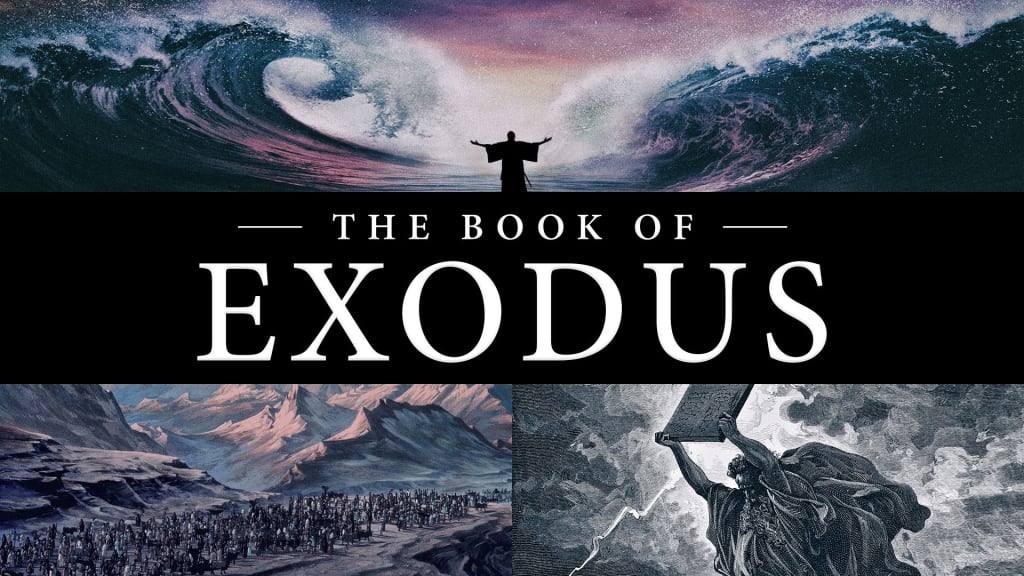The Book of Exodus Chapter 4
Exodus 4: Moses' Signs and Return to Egypt

Exodus 4: Moses' Signs and Return to Egypt:
In the heart of the wilderness, far from the bustling cities of Egypt, Moses stood alone, grappling with the weight of his divine mission. Exodus 4 brings us to a pivotal moment in the story of Moses, where he receives a set of signs from the Almighty to confirm his role as a deliverer of the Israelites and his reluctant return to the land of his past.
As Moses had stood before the burning bush on the sacred mountain of Horeb, God had unveiled His plan—a plan that involved Moses' return to Egypt, the land from which he had fled as a fugitive. It was a mission to confront Pharaoh, the ruler of Egypt, and demand the release of the Israelite slaves, setting them on a path to the Promised Land.
Yet, Moses, once a prince of Egypt, now a humble shepherd, was filled with trepidation and doubt. He questioned his own worthiness and the ability to convince the Israelites and Pharaoh of the legitimacy of his mission. God, in His infinite wisdom, responded with a series of miraculous signs to confirm His divine authority and presence.
The first sign involved the transformation of Moses' shepherd's staff into a serpent. As Moses reached down to grasp the staff, it morphed into a writhing serpent, a symbol of power and authority. Fear gripped Moses as he recoiled from the sight, but God reassured him, instructing him to reach out and seize the serpent by the tail. As Moses did so, the serpent transformed once more into a staff, a sign of God's control over the natural world.
The second sign was equally astounding. God commanded Moses to place his hand inside his cloak and then withdraw it. When Moses obeyed, he found his hand leprous, white as snow. In shock, he returned his hand to his cloak, and upon withdrawing it again, the leprosy vanished, leaving his flesh as healthy as it had been before. This miraculous healing was a sign of God's power to afflict and to restore.
Finally, God provided a third sign for Moses to demonstrate before the Israelite elders—the transformation of water from the Nile River into blood. This sign held great symbolic significance, as the Nile River was not only a life-giving source of water but also a symbol of Egyptian fertility and power. By changing the river's waters into blood, God underscored His authority over Egypt's mightiest natural resource.
Armed with these miraculous signs, Moses was ready to fulfill his divine mission. He set forth on a journey, accompanied by his brother Aaron, to the land of Egypt. His heart was heavy with the knowledge that he was part of something far greater than himself—an instrument of liberation for a people in bondage.
Upon their arrival in Egypt, Moses and Aaron gathered the Israelite elders and performed the miraculous signs before them. The transformation of the staff into a serpent, the healing of leprosy, and the changing of water into blood left the elders in awe and belief that God had indeed visited His people and heard their cries.
Yet, the path to liberation would not be without its challenges. Moses and Aaron stood before Pharaoh, the powerful ruler of Egypt, and delivered God's message: "Let my people go." But Pharaoh, hardened of heart, refused to heed their plea. Instead, he intensified the Israelites' labor and subjected them to even harsher conditions.
The stage was set for a dramatic confrontation between the will of God and the obstinacy of Pharaoh. What followed was a series of ten devastating plagues, each more catastrophic than the last, as God demonstrated His supreme authority and determination to secure the release of His people.
Exodus 4 captures the transformative journey of Moses—from a reluctant shepherd in the wilderness to the leader chosen by God to deliver the Israelites from bondage. It is a narrative of faith, obedience, and the confirmation of divine presence through miraculous signs.
The signs granted to Moses not only affirmed his mission but also served as a testimony to the Israelites and Pharaoh of God's power. They would become a foundational part of the epic story of liberation and the eventual Exodus of the Israelites from Egypt, setting the stage for one of the most iconic narratives in human history.
As Moses stood before Pharaoh, he bore the weight of his divine calling, the weight of a people's hopes and dreams. The signs he carried with him were not only evidence of God's authority but also a reminder that, in the face of tyranny and oppression, faith and determination can lead to miraculous transformations and the promise of freedom.
About the Creator
Raymark Marcos
A Writer and Guitarist
A son of God
A student who's doing a lot of side hustles to earn enough money to be able to go for college.






Comments
There are no comments for this story
Be the first to respond and start the conversation.